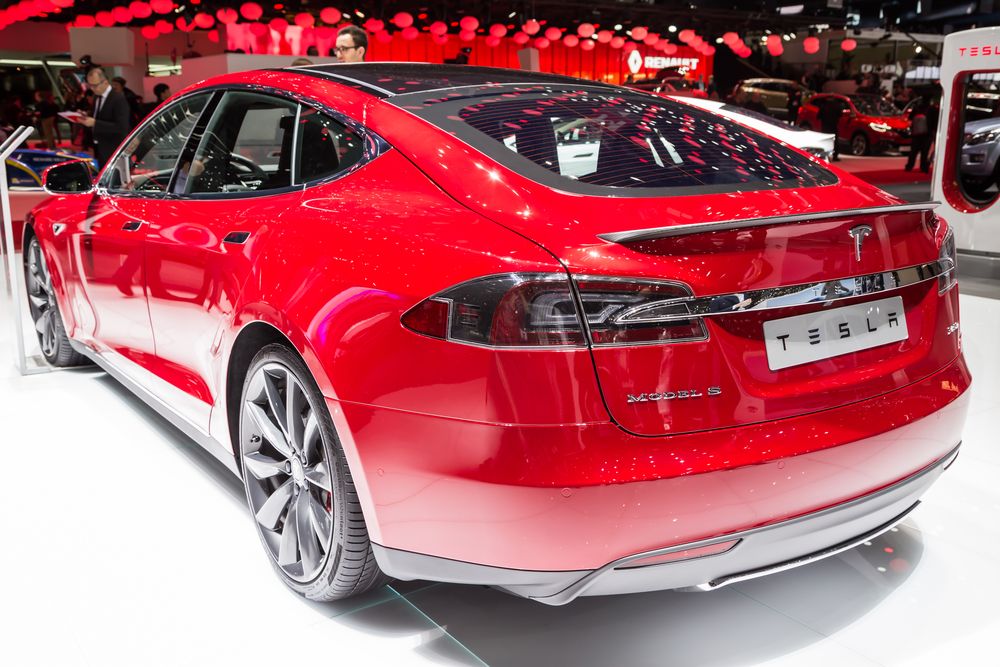Editor's note: This article first appeared onCarInsurance.com and is reprinted here with their permission.Click here for the original post.
|We're all familiar with the basic premise of electricvehicles—that they are much better for our environment. But hereare a few facts about electric vehicles (EVs) that you likely don'tknow:
|1. Aging EV batteries perform better than wethought
|“Range anxiety,” the concern that you might not have enoughdriving range to reach your destination or next charging station,is felt by many eco-friendly drivers, but on top of that, there'sthe fear that you will have to replace your battery after a fewyears.
|[Related: Choosing a plug-in electriccar]
|With today's EV batteries, “end of life” is commonly defined aswhen the storage capacity drops down to 70% to 80% of the originalcapacity. This can happen after a few years of daily driving. Ascapacity fades, the vehicle's range decreases. At that point,typically once its down 20%, common wisdom goes, the battery shouldbe replaced. So when scientists last week issued a report refutingthat notion, it came as a pleasant surprise.
|Scientists at the Department of Energy's Lawrence BerkeleyNational Laboratory (Berkeley Lab) decided to investigate theextent to which vehicles still meet the needs of drivers beyondthis common battery retirement threshold.
|Range anxiety unfounded for most U.S.drivers
|Samveg Saxena, who leads a vehicle power-train research programat Berkeley Lab, analyzed real-world driving patterns and foundthat “range anxiety may be an over-stated concern” since EVs canmeet the daily travel needs of more than 85% of U.S. drivers evenafter losing 20% of their originally rated battery capacity. Thereport also says that EV batteries can “satisfy daily mobilityrequirements for the full lifetime of an electric vehicle.”
|Even at 50% of the EV battery's original storage capacity, about80% of daily driving needs could still be met, according to thereport. At 30% of the original capacity, 55% would still get wherethey need to go on a daily basis.
|“There are two main reasons people are hesitant to buy an EV:first, they're unsure it will satisfy their mobility needs, andsecond, they're afraid the battery won't last the whole life of thecar and they'll have to replace it for a lot of money,” saidSaxena, who has a Ph.D. in mechanical engineering. “We show that,even after substantial battery degradation, the daily travel needsof most people are still going to be met.”
||
(Photo: Shutterstock.com)
|2. EV sales sluggish; researchers suggest swapping taxcredits for charging station building funds
|A new National Science Foundation (NSF) report, which draws onstatistics from the U.S. Department of Energy (DOE) and automotivesources, points out that a little more than 250,000 electric carshave been sold since 2010, the first year they becameavailable.
|In recent years, about 97,000 electric cars were bought in 2013and 119,000 in 2014. Paltry figures, the NSF laments, when comparedto the 13 million gas-powered vehicles (passenger cars, lightpickup trucks, SUVs and vans) sold in 2013 and the more than 14million in 2014.
|Why has adoption been slow? The main reasons, according to theNSF and DOE, have been in place since the beginning—electric carsare expensive and most people don't fully understand thetechnology. Further, there just aren't enough charging stations tosatisfy the needs of motorists hoping to pollute less but stilldrive great distances.
|As for the “prohibitive” price of most EVs—which the NSF saysranges from $15,000 to more than $70,000—the researchers do pointout that a $7,500 tax credit can ease buyers' pain. But they wonderif that's the best way to spend the $1.05 billion they saysubsidies have cost the federal government.
|They suggest the money could instead be used to build more than60,000 charging outlets across the country, which might lead to afive-fold jump in EV sales. “That number of potential chargingstations is significant,” the report states, “it represents abouthalf the total number of gasoline stations in the UnitedStates.”
||
(Photo: Shutterstock.com)
|3. Electric vehicle insurance may involve your homeownerpolicy
|Depending on where you live, you may be required to includeliability coverage in your homeowners insurance policy for fires orany other potential mishaps tied to the car's charging system.
|“The American Association of Insurance Services reports thatlaws in at least two states—Oregon and California—require somehomeowners and condo-owners to have liability coverage thatprotects the charging equipment,” Allstate says on its website.“Even if your state doesn't require coverage in this circumstance,it may be a good idea to talk to your insurance agent about anyhomeowners insurance implications.”
||
(Photo: Nessluop/Shutterstock.com)
|4. Electric vehicles typicallycost more to insure
|Repair and replacement costs for EVs are higher than forgas-powered cars so EVs are usually more expensive to insure. Thehigher cost is due, in part, to the pricier parts EVs use.
||
(Photo: Jia Li/Shuttestock.com)
|5. Some car insurance companies offer a car insurancediscount for electric vehicles
|Though you may pay a bit more for insurance, some of that may beoffset by a discount. Some insurance companies, such as Travelers,Farmers and Geico, offer car insurancediscounts on hybrids and EVs in certain states. Thediscounts can reach 5% to 10% off major coverages of collision,comprehensive and liability.
||
(Photo: Shutterstock.com)
|6. Electric vehicles are quiet; proposals to add soundsare on the table
|Federal safety agencies are concerned that EVs pose a danger topedestrians and cyclists—the cars are so quiet that people walkingand riding bikes don't hear them approaching. There hasn't beenmuch buzz recently about this, but the National Highway TrafficSafety Administration (NHTSA) does have some proposals on the tableto pitch to lawmakers and auto manufacturers. Some of these ideasinclude requiring EVs (and hybrids) to emit a sound similar to aregular engine when the car is operating at low speeds.
||
(Photo: Shutterstock.com)
|7. Why so expensive? Start with the battery
|The DOE says that before 2009, a 100-mile range electric batterycost $33,000. The price tag is about half that today and the DOEexpects it to drop to at least $10,000 by the end of 2015. Stillexpensive, but getting better.
|Energy officials add that as much as 80% of the energy in thebattery is transferred directly to power the car, compared withonly 14% to 26% of the energy from gasoline-powered vehicles.
||
(Photo: Shutterstock.com)
|8. Getting from here to there—a gas to electriccomparison
|The DOE says it costs about $1 for today's EVs to travel thesame distance as a similar-sized gasoline car using a gallon offuel. “This adds up to a savings of more than $2 a gallon or $1,000a year in refueling costs, and the next generation of electricvehicles will bring even bigger savings,” according to Energy.gov, the DOE's website.
||
(Photo: Shutterstock.com)
|9. State and local monies may be available
|Beyond the $7,500 tax credit provided by the feds, electricvehicle buyers may also qualify for similar state and even localgovernment incentives. California, for instance, offers up to a$2,500 rebate. On the more local side in the Golden State, the SanJoaquin Valley Pollution Control District in central Californiaoffers a $1,000 to $3,000 rebate.
||
(Photo: Shutterstock.com)
|10. The first electric vehicle is very, veryold
|Robert Anderson invented the first primitive electric car, wayback in 1832. It was a “crude electric carriage” that, nonetheless,was able to move through “non-rechargeable primary cells,”according to PBS's “Now” program. The vehicle made technologicalstrides over the next few decades and the first electric taxisbegan operating in New York City in early 1897.
|At the time, there were more EVs on New York streets than gascars. But lacking the speed and power of gas models, theyeventually became less popular. The rise of the combustion machineswas at hand—Henry Ford introduced the Model T, mass-produced andaffordable for many Americans, in 1908.
|Additional reading
|Estimating car insurance rates: What you need toknow
||Want to continue reading?
Become a Free PropertyCasualty360 Digital Reader
Your access to unlimited PropertyCasualty360 content isn’t changing.
Once you are an ALM digital member, you’ll receive:
- All PropertyCasualty360.com news coverage, best practices, and in-depth analysis.
- Educational webcasts, resources from industry leaders, and informative newsletters.
- Other award-winning websites including BenefitsPRO.com and ThinkAdvisor.com.
Already have an account? Sign In
© 2024 ALM Global, LLC, All Rights Reserved. Request academic re-use from www.copyright.com. All other uses, submit a request to [email protected]. For more information visit Asset & Logo Licensing.








